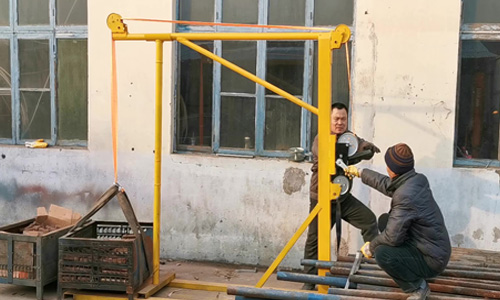Winch and hoist are both common lifting tools, especially electric hoists and electric winches, which are all composed of drums, motors, and control systems, and often look alike. Many people commonly refer to electric winches and windlasses as electric hoists. If you’re not in the hoisting equipment, it might be unclear about the specific differences between winches and hoists.
Let’s analyze the distinctions from a few perspectives.
Operation Direction
The primary difference lies in their operation direction. According to Wikipedia’s explanation of a winch, a winch is a mechanical device used to pull in (wind up) or let out (wind out) a rope or wire rope to adjust tension. Winches are mainly used for tension and traction and can operate from various directions.
For example, ATV electric winches are commonly used to pull off-road vehicles out of challenging situations. It’s usually operated horizontally. These winches are also combined with cranes on trucks for lifting loads in various settings such as agricultural warehouses.
Another example is the hand winch usually used for ship lifting, pulling, tugging, anchoring and other operations.
On the other hand, a hoist is mainly used for vertical lifting. Hand chain hoists can only lift, pull, and position loads vertically. Electric hoists, like electric chain hoists and wire rope hoists, are specifically designed for lifting heavy loads.
In summary, winches can be used for both pulling and vertically lifting items, whereas most hoists are designed solely for lifting.
POSITIONING
Hoists must be installed above the lifting object for vertical lifting. In contrast, winches are more versatile and can be suspended on I-beams, placed on the ground, or fixed to walls.

Power Source
There are manual winch, manual hoist, electric winch and electric hoist. Electric hoists and electric winches can operate on a single-phase 220V or high-voltage 380V power supply. However, electric winches are more portable and versatile, as they can use the 12V or 24V power supply from a vehicle’s battery.
Brake System
Another major difference between hoists and winches is the braking system. Hoists typically use mechanical brakes, which allow for braking midway while lifting heavy loads, ensuring that the hoist remains suspended in the air without dropping. However, winches commonly employ dynamic braking. Therefore, winches without mechanical brake systems should never be used for lifting objects as hoists.
Loading weight and length
Electric hoists come in a variety of specifications, ranging from 0.5T to 30T. Electric winches, on the other hand, typically have smaller specifications, with main options being 1T, 2T, and a maximum of 10T.
Electric winches also have longer rope drums; for instance, the JM series lifting machine can have a steel wire rope length of up to 100M. In contrast, electric hoist lengths are typically 6M, 9M, or 12M. However, both electric winches and electric hoists can be customized in terms of length.
Through the above analysis, you can see that if you install a hoist instead of a winch on your Jeep, it will be very difficult for you to get out of the mud. On the other hand, if you install a winch instead of a hoist for driving, there may be a serious accident.
Liftpand has over ten years of experience in the lifting industry and offers a variety of winches and hoists. If you’re unsure about how to choose the appropriate style and specifications, feel free to contact us.

